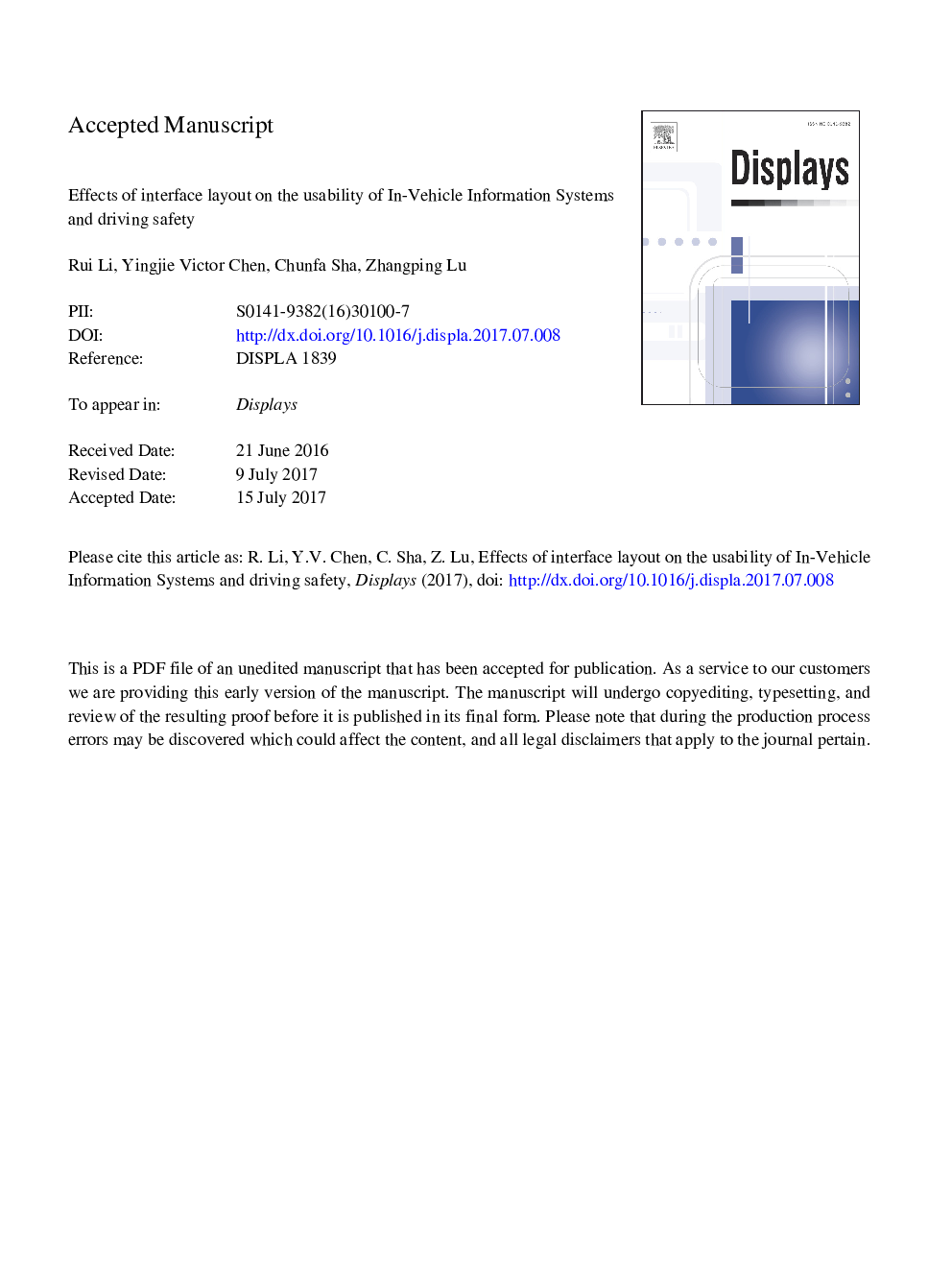| Article ID | Journal | Published Year | Pages | File Type |
|---|---|---|---|---|
| 4970580 | Displays | 2017 | 22 Pages |
Abstract
This study investigated the impact of two In-Vehicle Information Systems (IVISs) on both usability and driving safety. We simulated vehicle checkerboard and hierarchical IVIS interface layouts and examined their usability based on task completion time, error rate, NASA-TLX, and System Usability Scale (SUS). Our driving safety measures included mean glance time, mean number of glances, blink frequency, and heart rate while real driving. The driving performances of 24 participants were recorded and assessed in real driving tasks of four driving speeds (0, 30, 60, and 80Â km/h). Our results show that task completion time, SUS, and mean number of glances were significantly different with the two layouts. Moreover, we observed that the two layouts varied in their impacts on usability and driving safety at the different speeds. The hierarchical layout was more efficient at the lower speeds of 0 and 30Â km/h, while the checkerboard layout outperformed at the higher speeds of 60 and 80Â km/h. This study offers empirical evidence for IVIS interface design.
Related Topics
Physical Sciences and Engineering
Computer Science
Hardware and Architecture
Authors
Rui Li, Yingjie Victor Chen, Chunfa Sha, Zhangping Lu,
